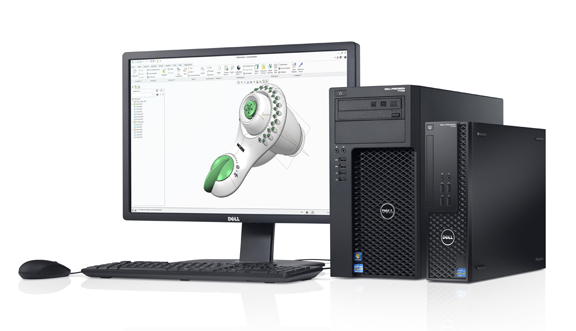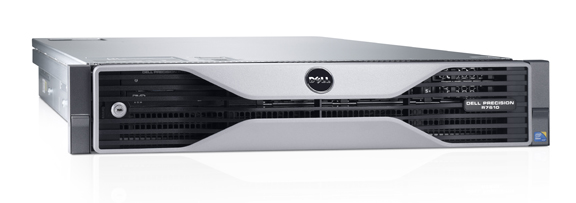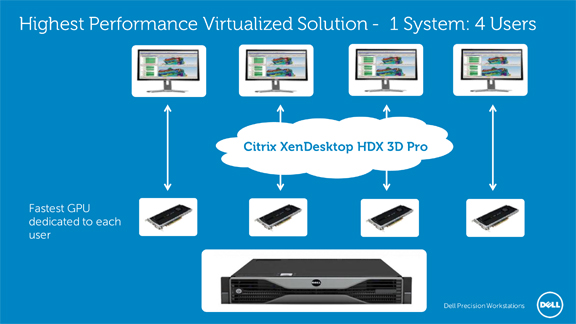Latest News
May 16, 2013
“Workstation performance for about the price of a desktop”—That’s how Dell pitches its new entry-level workstation T1700.
The new unit is available in small form factor and mini-tower configurations. They’ll be powered by Intel Xeon processor E3-1200 v3, based on Intel’s next-generation Haswell architecture. The chip maker is heavily promoting Haswell as the technology to increase power efficiency. GPU options for the T1700 includes AMD FirePro and NVIDIA Quadro cards. According to Dell, the T1700 is “industry’s smallest entry-level tower workstation.”
As an entry-level product, the T1700 targets the budget-conscious 2D and 3D design software users—the segment that often resorts to buying a top-of-the-line consumer desktop instead of a CAD-certified workstation. T1700 models are “designed and certified for engineering, architecture and finance professionals. The workstations also are ideal for higher education and high-school students working with 2D, entry-level 3D simulation or multitasking with demanding applications,” Dell says in the announcement. Dell’s rival HP targets the same segment with its entry-level Z210 workstation, priced beginning $569. (For more, read “HP’s first entry-level workstation: Z210,” April 2011.)
The new workstation comes with Dell’s Performance Optimizer software, meant to automatically tune software performance on your machine. The software also handles driver updates and system usage analysis. This is Dell’s equivalent of HP’s Performance Adviser, preloaded in HP workstations.
We can’t yet determine how closely the T1700 is priced to a typical consumer desktop you might pick up at local Best Buy, because Dell is withholding the price till June 4, when the unit will actually ship.
At the same time, Dell also launches a new rack-mountable workstation, Dell Precision R7610. Though fully functional as a workstation, the product is meant for data-center deployment. With this setup, the workstation can be deployed in a secure service room, physically away from the users’ desktops and cubicles. Dell partner Teradaci’s PC-over-IP remote terminals serve as the intermediary control devices to connect the workstations and the users.
Dell says in the announcement, “A single workstation can be used by four users without sacrificing performance. The new R7610 achieves this via GPU pass-through and certifications with Citrix XenServer 6.1.0 using Citrix XenDesktop HDX 3D Pro, which allows all the resources of a dedicated discrete graphics card to be uniquely shared with multiple users in a hosted-shared environment or made available to a single user or virtual machine in a virtualized environment.”
Let’s see if I can help you make sense of this PR speak. In remote PC setup, the option that gives you the best performance is the one-to-one connection. That’s where the processor power and memory of one physical machine are made available to one exclusive user remotely. But if your workload is light and you don’t need the full force of the entire machine connected to you, you may divide up that one physical R7610’s resources among four client devices (say, an iPad, two laptops, and a remote terminal).
The virtual GPU sharing, however, is currently only available as a one-to-one setup. Only one client device can access the virtual GPU at a time. In the future, NVIDIA and its partners may improve the virtualization technology to allow GPU sharing among multiple users or devices.
The R7610 comes with Dell’s Reliable Memory Technology, described as a “Dell patented code programmed at the BIOS level that eliminates virtually all memory errors and therefore the need for extensive full memory tests, IT support calls and memory DIMM replacement.” This technology, according to Dell, can identify bad memory sectors and quarantine them so you won’t write to them. In addition, it can also alert you to replace a memory module if it’s too damaged to be reliable.
The Precision R7610 will be available beginning May 21, at prices starting from $2,179.
Subscribe to our FREE magazine, FREE email newsletters or both!
Latest News
About the Author
Kenneth Wong is Digital Engineering’s resident blogger and senior editor. Email him at [email protected] or share your thoughts on this article at digitaleng.news/facebook.
Follow DE








